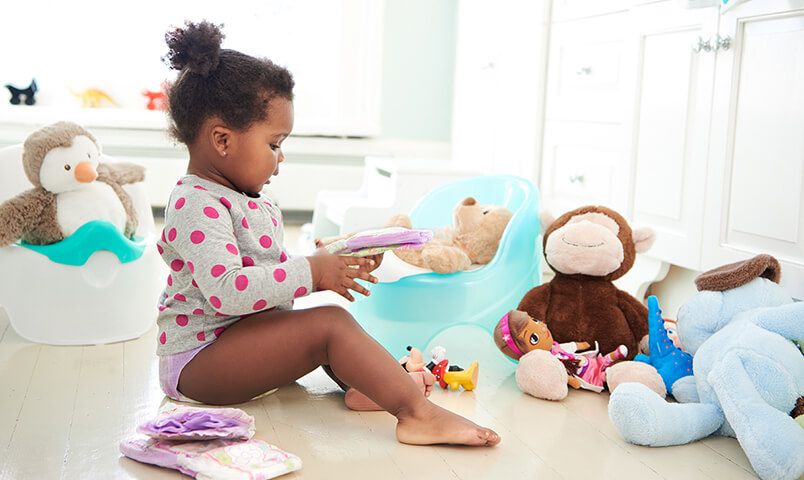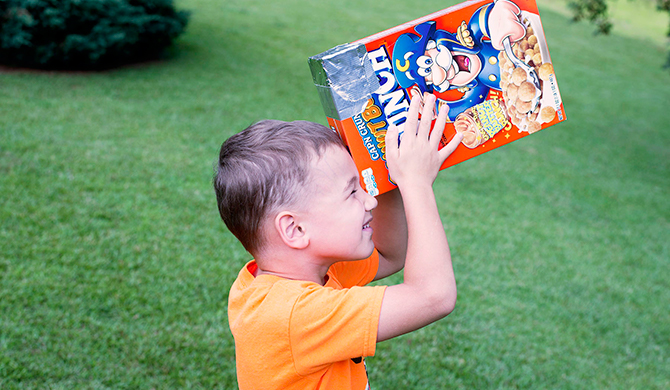
The Real Diaper Association estimates that the average family spends up to $1,600 on disposable diapers during the first two years of a child’s life. In addition to being expensive, disposable diapers also trap moisture against your little one’s delicate skin, often resulting in painful diaper rash that can leave her uncomfortable and irritable.
When the time to toilet train your child arrives, the idea of using what’s essentially a disposable diaper vaguely shaped like underwear may not be particularly appealing to you, especially if she’s prone to rashes and your budget is tight. While disposable training pants have become a widely accepted tool for potty training toddlers since they were first commercially introduced in 1989, parents have been helping their children reach this milestone for centuries without the assistance of these relatively expensive and decidedly non-eco friendly products.
These 10 tips can help you make the switch from diapers to the potty, without resorting to disposable training pants.
- Be Prepared and Patient – Learning to use the potty is a major transition for your child, and it isn’t one that’s likely to happen overnight. In the weeks leading up to the big day, take any available opportunities to prepare your little one to discard her diapers. It’s also wise to prepare yourself for a few setbacks. Even the most eager and dedicated parent will struggle with potty training a child that isn’t ready, so remember that this is a big step for her and try to be patient.
- Invest in a Moisture-Resistant Mattress Cover – Nighttime accidents are an unfortunate reality for almost all children, especially in the early days of potty training. If you’re determined not to use disposable training pants or diapers at all, it’s a good idea to purchase a barrier to protect your child’s mattress.
- Talk About the Potty – Even if your toddler isn’t excessively verbal, she’s still able to understand basic concepts when you explain them to her. Take the time to talk about why she needs to use the potty, both in the days leading up to the transition and during the toilet training process.
- Offer Visual Representations – Using dolls or reading one of the many illustrated children’s books on the subject of potty training can help your child grasp the concept a bit more firmly by providing her with visual representations.
- Maintain Method Consistency – If you’re determined to go cold turkey, with no diapers and no disposable training pants, it’s important that you consistently maintain these practices. Getting frustrated with the process and slapping a diaper or pair of disposable trainers on your child will only send her mixed messages and make it more difficult for her to make the transition from diapered child to a fully potty trained one.
- Frequently Ask Her if She Needs to Potty – When your child is actively engaged in an enjoyable activity, there’s a very good chance that she’s so absorbed in what she’s doing that she doesn’t notice the urge to use the bathroom. Making a habit of reminding your child about the potty and asking her if she needs to use it can reduce the frequency of accidents caused by distraction.
- Visit the Bathroom Often – Though you should ask your child if she needs the potty on a regular basis, it’s also wise to insist you visit the restroom together fairly often as well. Until your child learns to recognize the sensation of needing to eliminate and is able to connect it with a trip to the potty, she’ll rely on you to help her avoid accidents.
- Reward Successful Restroom Trips – If your parenting philosophy includes rewards for good behavior and successfully reaching milestones, make sure that you provide a reward each time your child uses the potty to reinforce the behavior.
- Communicate With Childcare Providers – Your efforts to maintain a consistent method of potty training will be foiled if your nanny or daycare provider puts a diaper or disposable training pants on your child the moment you leave. Make sure that her caregiver is on the same page as you, and is willing to maintain the same training practices that you do when you’re at home.
- Consider Elimination Communication – If you’re able to devote the time and energy required into the infant toilet training method of elimination communication, you can almost forgo the entire diapering process. According to Contemporary Pediatrics, almost half of the children in the world never wear diapers and are completely potty trained by the time they’re a year old. This method is largely used in Africa and Asia, but is becoming more popular with North American parents.
Because disposable training pants feel and act so much like the diapers that your child is accustomed to wearing, they can actually impede the toilet training process for some children. By wicking moisture away from your child’s skin initially, disposable trainers can make it difficult for her to realize that she’s wet. While this can make them an ideal choice for overnight use in some cases, using them throughout the day can easily confuse a child who still feels like she’s wearing the same diapers she’s always worn.
Photo: PullUps













